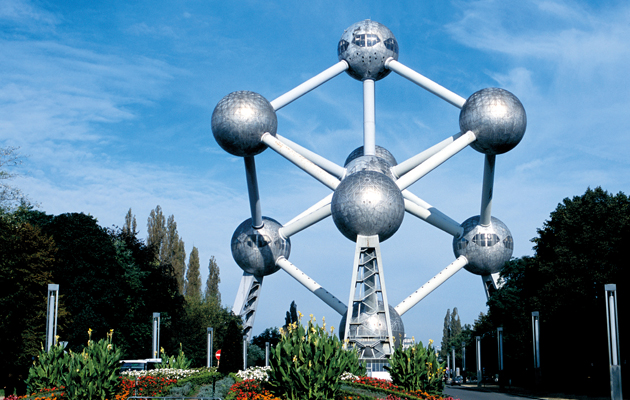|
In our August issue, we consider what the world’s fairs represent – looking at this year’s Milan Expo, the 1958 Brussels Expo and a mini-history of fair mascots – as well as visiting OMA’s new Fondazione Prada Progress is a perpetual fixation for many, encrypted into everyday life: ambition is a virtue; inertia is tantamount to failure. And there is power in progress, we’re told, that’s how the world turns. It’s also how the world’s fair turns (a.k.a. the Expo, a.k.a. the Universal Exhibition). Since 1851, world’s fairs have taken place across the world, from Paris to Port-au-Prince (though none have happened in Africa or the Middle East). At their heart, these fairs are a global cold war, with architecture and engineering as their weapons. Who is living the future? Let’s invest! This year, the fair has landed in Milan. But, as Tim Abrahams writes, the Expo today represents a much more complex vision of how those weapons might be deployed. With this year’s Austrian pavilion, which is essentially a patch of woodland demanding from us not awe but a meditative pause, emerges the “non-pavilion”. Seemingly not making any attempt to directly represent “Austria”, it ceases to play the Expo game: the soft power of architecture here is at it’s absolute softest. A far cry from 1851’s Crystal Palace, which is an architectural fixation even today, to such a degree that there was great interest (by a Chinese developer) in rebuilding it. The original world’s fair pavilion is still doing its work to brand Britain. In this issue, we take a look at what the world’s fairs did and do represent – looking at Milan but also heading back in time to the 1958 Brussels Expo, and a mini-history of fair mascots, who attempt to make this archi-circus a family affair. Elsewhere in the issue, we look at another soft-power push: Andrew Ayers visits the new OMA-designed Fondazione Prada (also in Milan), the latest venture in the world of fashion-funded art institutions, and an elegant and nuanced one at that. As a building, it stands in stark contrast to the brazen “Whoa” of Frank Gehry’s Fondation Louis Vuitton in Paris last year, which is an attempt at iconic architecture sitting, anomalously, in the middle of a park. Does the Fondazione Prada’s subtlety make it less of a tool, and more of a contribution? |
Words David Michon
|
|
|
||
|
|
||
|
IN THIS ISSUE Expo 2015 Does (or should) the Milan edition mark the beginning of the end for the World Expo movement? Mascot madness A mini-history of Expo organisers’ odd attempts to make the world’s fair a family affair Expo 1958 Jonathan Coe explores the lasting allure, and conflicting messages, of the 1958 Brussels Expo Food futures Carlo Ratti explains why, even with robotics and digital screens, tomorrow’s supermarket is a social space REM and Miuccia Fondazione Prada and its “deliberate accidents” PLUS Jamie Hayon’s Game On collection brings sports together with furniture, Make’s groundscraper lands at Broadgate, the Vienna Biennale and its ideas for change, new pieces from in-demand studio Moving Mountains, Peter Zumthor mentors Gloria Maria Cabral, Piet Hein Eek’s revamp of the holiday home, design polymath Hanna-Kaarina Heikkilä, and praise for We Made That’s socially-driven practice Rethink Why clothing should be “unsized” Reviews The Pompidou’s epic Le Corbusier show, rediscovering the graffiti of 1970s London, Carol Bove and Carlo Scarpa, and a joy ride with Mad Max: Fury Road
|
||


















